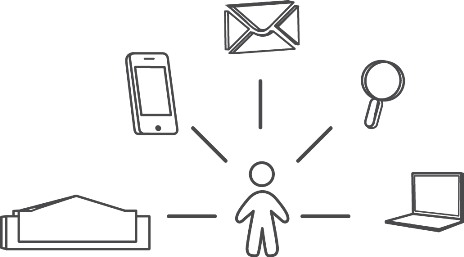How Walmart Is Leading The Omnichannel Charge

The convergence of physical and digital commerce is gathering pace. And, as ever, the speed of change is being dictated by consumer demand.
The three-in-a-bed marriage of a seamless mobile, website and in-store shopping experience is what the modern consumer wants – the problem is that many retailers are still far too committed to monogamy, wedding two out of three at best.
A recent study from Accenture – which surveyed 750 U.S. consumers and a separate 150-question survey of 32 U.S. retailers – found that whilst 45% of consumers would like to receive real-time promotions delivered to their smartphones or tablets whilst shopping in-store, only 28% of retailers actually delivered that service.
Dave Richards, global managing director of Accenture’s retail practice:
“The fact that many consumers are looking for real-time promotions to be sent to their phones means retailers have an opportunity to capitalize on the power of these devices. All sales channels must be equally desirable to the consumer, so that the path to purchase is not chosen based on satisfaction in one channel over another, but simply on what is most convenient at that time.”
The Omni-channel Demand
Multi-channel customer experiences are already yesterday’s news – the constantly connected, tech-savvy modern consumer wants omni-channel integration from retailers.
Whether customers are in store, on the telephone or browsing a retailer’s website, when they switch from one to the next, the growing expectation is that their order history and customer profile should follow them. It’s a question of personalisation. Insights and analytics are now sophisticated enough to predict user behaviour and tailor personalised recommendations for returning customers online. But when those same customers enter the physical store – or even make a phone call – all this data is still going to waste on a rather large scale.
The Accenture study finds that 32% of consumers agree that the biggest improvement retailers need to make is to integrate the mobile, website and in-store shopping experience. Consumers want to use their desktops to check inventory by store on a retailer’s website, complete the purchase and payment later with their smartphone, and then pick up the product at a convenient time from a preferred location. Indeed, 20% of shoppers have increased the use of such a buy online/pickup in-store option during the past year, but, Accenture says, the overwhelming majority of retailers still cannot or do not offer this level of service.
Wal-Mart Leads The Supply
So, who’s getting the integration right?
Wal-Mart, for one. In fact, it’s fair to say that Wal-Mart is leading the omni-channel charge. Numerous improvements to the tune of $1.2 billion have recently been made to its e-commerce program, as the discount compartment store focuses its efforts on the omni-channel shopper.
“We will be the first to deliver a seamless shopping experience at scale,” said Wal-Mart CEO Doug McMillon. “No matter how you choose to shop with us, through your mobile device, online, in a store, or a combination, it will be fast and easy.
“Online retailers are testing physical store experiences because they recognize the same customer desire that we do. There’s a race to do this right, but only Wal-Mart can bring together a dense network of stores, supported by a supply chain and systems like ours, with an emerging set of digital capabilities to win with customers.”
In its third quarter, Wal-Mart has rolled out its online grocery pickup services to 85 locations, bringing the total to 140 stores in 25 metropolitan markets that allow store pickup of online grocery orders.
"As we build out our e-commerce capabilities we are deepening our digital relationships with our customers," McMillon added. "We've accelerated our expansion of online grocery pickup and we've seen that customers who start using online grocery spent nearly 50% more than similar customers who shop only in stores. This is the customer we're going after. The shopper in our sweet spot who accesses Wal-Mart in multiple ways."
Geo-fencing Technology
In addition, the merchant has made several improvements to its mobile technology capabilities, as geo-fencing technology – which links up with customers’ loyalty accounts and mobile devices to alert the retailer when a customer arrives in the parking lot to pick up an online order – has been implemented in all stores.
It also launched a wish list that allows consumers to add desired items from home or by scanning items in a store. “We expect more than 210 million visits to our app in November and December, up from 18 million in 2012,” McMillion said.
Final Word
The Accenture study highlights a lot of underperformance amongst retailers vying for market share in the modern hybrid world of physical and digital commerce. Merchants must continuously push to evolve their strategies stay ahead of consumer demand. Indeed, with the likes of Wal-Mart pushing ahead with this sort of technology, it won’t be long before collective consumer expectation rises once more, and those retailers that don’t bring themselves up-to-date will find themselves left helplessly stranded at the altar as the polygamous practices of mobile, web and in-store integrations become the norm.
eTail Content Brought To You By
Sailthru is leading provider of email and personalization software for the world’s fastest growing retailers including RentTheRunway, JustFab and Alex and Ani. Through 1:1 relationships, our customers reduce churn and drive higher email revenue and customer lifetime value.
